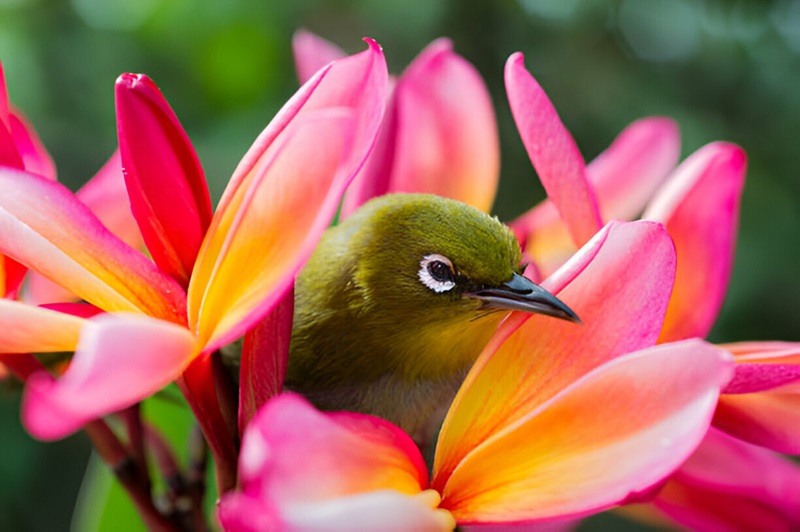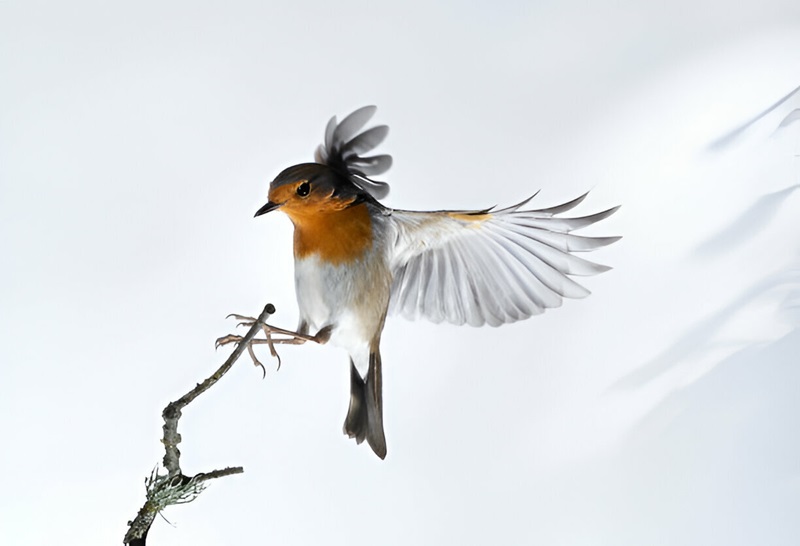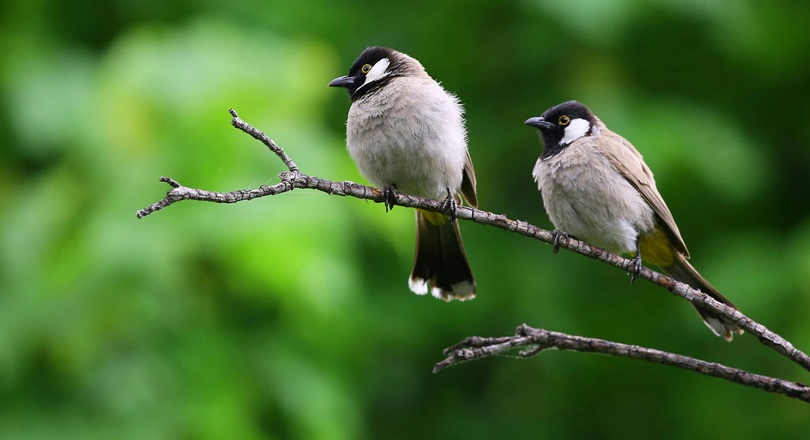Last Updated on February 28, 2025
Birds are feathered, warm-blooded creatures capable of flight. They possess unique adaptations like beaks and lightweight skeletons.
Birds are fascinating creatures, found in nearly every environment on Earth. They play crucial roles in ecosystems, acting as pollinators, seed dispersers, and predators. Their varied diets range from insects and plants to small animals. Birds communicate through songs and calls, often specific to their species.
Migratory patterns showcase their impressive navigational skills, traversing thousands of miles. These avian travelers rely on the Earth’s magnetic field for orientation. Observing birds offers insights into biodiversity and environmental health. Birdwatching has become a popular hobby, fostering a deeper appreciation for nature. Understanding birds enhances our knowledge of ecological balance and conservation needs.

The Evolutionary Journey Of Birds
Birds are fascinating creatures with a rich evolutionary history. Their journey from ancient dinosaurs to the diverse avians we see today is remarkable. This section explores the transformation and key adaptations that have shaped birds over millions of years.
From Dinosaurs To Modern Avians
Birds evolved from theropod dinosaurs, a group known for their sharp claws and teeth. Scientists believe that birds’ ancestors lived about 150 million years ago. These ancient creatures had feathers, but they could not fly. Over time, feathers became more complex, allowing for better insulation and display.
Fossils like Archaeopteryx show the transition from dinosaurs to birds. This creature had wings and feathers but also had teeth and a long bony tail. Modern birds have evolved to have beaks and short tails. This change helped them adapt to various environments and food sources.
| Period | Key Features |
|---|---|
| Jurassic | Feathers for insulation and display |
| Cretaceous | First flight-capable birds |
| Modern Era | Diverse beaks and short tails |
Key Evolutionary Adaptations
Birds have developed several adaptations to thrive in their environments. One major adaptation is the development of hollow bones. These bones are strong yet lightweight, aiding in flight.
Another crucial adaptation is the evolution of feathers. Feathers serve multiple purposes, including flight, insulation, and attracting mates. Birds also developed beaks that vary in shape and size, depending on their diet. For example, eagles have sharp beaks for tearing meat, while hummingbirds have long beaks for sipping nectar.
Birds have also evolved keen vision and hearing. These senses help them find food and avoid predators. Their respiratory system is highly efficient, allowing for sustained flight over long distances.
- Hollow bones – lightweight and strong
- Feathers – for flight, insulation, and display
- Varied beaks – adapted to different diets
- Keen senses – for finding food and avoiding danger
- Efficient respiratory system – supports long-distance flight
Avian Diversity Across The Globe
Birds are among the most diverse creatures on Earth. They inhabit every continent and climate. Their colors, sizes, and behaviors show an incredible range. This diversity makes the study of birds fascinating.
Exploring Different Habitats
Birds live in various habitats around the world. Forests, deserts, wetlands, and oceans each host unique bird species. Forests are home to vibrant parrots and songbirds. Deserts host hardy species like the roadrunner.
Wetlands are teeming with life. Here you will find ducks, herons, and flamingos. Coastal areas and oceans are home to seagulls, puffins, and albatrosses. Each habitat offers different food and shelter, shaping bird behaviors and traits.
Species Richness And Endemism
The number of bird species varies across regions. Some areas have high species richness, meaning many different types of birds. Tropical rainforests are an example. They have thousands of bird species. The Amazon rainforest alone hosts over 1,300 species.
Endemism refers to species found only in a specific place. Islands often have high endemism. For instance, the Galápagos Islands have unique finches. Madagascar is another example, with its rare species like the Madagascar Pochard.
| Region | Number of Bird Species | Examples |
|---|---|---|
| Amazon Rainforest | 1,300+ | Harpy Eagle, Toucan |
| Galápagos Islands | 58 | Darwin’s Finches |
| Madagascar | 285 | Madagascar Pochard |
Birdwatching can be an exciting hobby. You can observe many species in their natural habitats. Remember to respect their environment and keep a safe distance.

The Intricacies Of Bird Behavior
Birds are fascinating creatures with complex behaviors. Understanding their actions can reveal much about their world. This section delves into the detailed behaviors of birds, focusing on their mating rituals, nesting habits, migration patterns, and navigation skills.
Mating Rituals And Nesting Habits
Birds have unique mating rituals that vary across species. Some birds perform elaborate dances or sing melodious songs to attract mates. Others display colorful plumage or engage in synchronized flying displays. These rituals ensure they find the best possible partners.
Nesting habits also differ widely among birds. Many birds build intricate nests using twigs, leaves, and other materials. They often choose secluded spots to keep their eggs safe. Some birds, like the emperor penguins, carry their eggs on their feet to protect them from the cold.
Migration Patterns And Navigation Skills
Birds exhibit incredible migration patterns, traveling thousands of miles each year. They migrate to find food, breed, or escape harsh weather. Species like the Arctic Tern cover distances from the Arctic to the Antarctic.
Their navigation skills are equally impressive. Birds use the sun, stars, and Earth’s magnetic field to find their way. Some species even use landmarks and smells to guide them. This ensures they reach their destination accurately.
| Bird Species | Bird Species | Bird Species | Migration Distance | Navigation Method |
|---|---|---|---|---|
| Peacock | Feather Display | Ground Nest | Non-Migratory | N/A |
| Arctic Tern | Vocal Calls | Scrape on Ground | 22,000 miles | Magnetic Field |
| Penguin | Vocal Calls | Carry on Feet | Non-Migratory | N/A |
Bird behavior is a window into their lives. By studying their rituals, nests, and migrations, we learn how they survive and thrive. Their behaviors showcase the beauty and complexity of nature.
Bird Communication: Songs And Calls
Birds communicate using a variety of sounds. These sounds can be songs or calls. Each sound has a different purpose. Songs are usually longer and more complex. Calls are shorter and simpler. Both are crucial for a bird’s survival.
Decoding Avian Language
Understanding bird communication helps us learn about their behavior. Each bird species has unique sounds. These sounds can indicate different things. For example, some calls warn of danger. Others are used to attract mates.
Birds also use songs to mark their territory. Some birds have a wide range of sounds. These birds can convey many messages. Listening to bird songs can be a delightful experience. It helps us connect with nature.
The Role Of Sound In Territory Defense
Birds use sounds to defend their territory. A loud song can scare off intruders. It tells other birds that the area is taken. This helps reduce conflicts.
Some birds sing at dawn. This is called the dawn chorus. It is a way to claim their territory early in the day. Singing at dawn shows strength and fitness. Birds with the best songs often have the best territories.
| Type of Sound | Purpose |
|---|---|
| Song | Attract mates, defend territory |
| Call | Warn of danger, communicate with flock |
Bird communication is a fascinating subject. It reveals much about their lives. Each sound tells a story. Next time you hear a bird, try to understand its message.
Conservation Efforts For Avian Species
Birds bring beauty to our world. They play vital roles in ecosystems. Yet, many bird species face threats. Conservation efforts aim to protect these fascinating creatures. This section explores the challenges and successes in bird conservation.
Threats To Bird Populations
Bird populations encounter several dangers. The main threats include:
- Habitat loss: Deforestation and urbanization reduce bird habitats.
- Climate change: Shifts in weather patterns affect migration and breeding.
- Pesticides: Chemicals poison birds and their food sources.
- Invasive species: Non-native animals prey on birds or their eggs.
- Pollution: Plastics and toxins harm birds directly and indirectly.
Successful Conservation Stories
Despite challenges, many conservation efforts succeed. Here are some inspiring examples:
| Species | Conservation Efforts | Outcome |
|---|---|---|
| California Condor | Captive breeding and reintroduction programs | Population increased from 27 to over 400 |
| Whooping Crane | Habitat protection and captive breeding | Population grew from 15 to over 800 |
| Bald Eagle | Pesticide bans and legal protections | Removed from endangered species list |
These stories show that conservation works. It’s possible to save bird species from extinction.
Frequently Asked Questions
What Are the Characteristics Of Birds?
Birds have feathers, beaks, and lay eggs. They possess lightweight skeletons and strong flight muscles. Most birds can fly, while some are flightless.
Why Are People Attracted To Birds?
People are attracted to birds due to their vibrant colors, melodious songs, and fascinating behaviors. Birdwatching offers relaxation and a connection to nature.
Why Are Birds So Special?
Birds are special due to their ability to fly, vibrant colors, and unique songs. They aid in pollination and pest control.
What Is The Value Of Birds To Nature?
Birds play crucial roles in nature. They aid in pollination, seed dispersal, and pest control. Birds maintain ecosystem balance and support biodiversity. Their presence indicates environmental health.
What Are Common Bird Behaviors?
Birds often engage in singing, flying, nesting, and foraging. These behaviors ensure their survival and reproduction.
Why Do Birds Migrate?
Birds migrate to find food, suitable climates, and breeding grounds. Migration patterns vary by species and region.
Conclusion
Birds captivate us with their beauty, songs, and unique behaviors. Observing them fosters a deeper connection with nature. Protecting bird habitats ensures their survival. Embrace birdwatching to appreciate these fascinating creatures. Nature’s avian wonders await your discovery. Let’s cherish and conserve our feathered friends for future generations.

